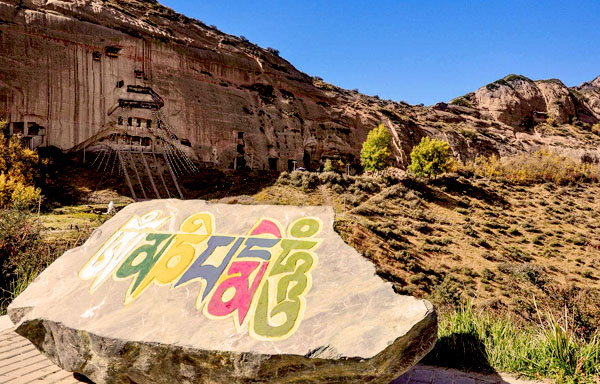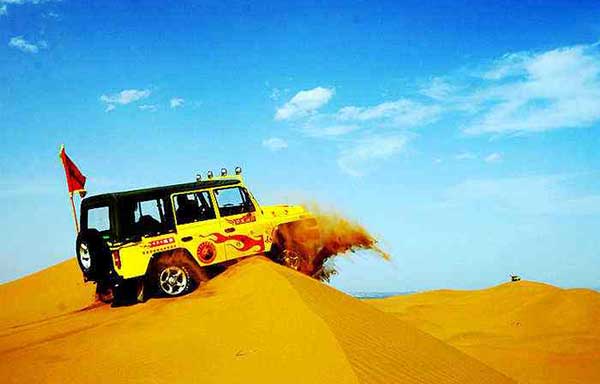- By admin
- In SilkRoadKnowledge
- 2016-06-07
Geographical Setting of the Silk Roads 1
by John Major
The term Silk Road denotes a network of trails and trading posts, oases and emporia connecting East Asia to the Mediterranean. Along the way, branch routes led to different destinations from the main route, with one especially important branch leading to northwestern India and thus to other routes throughout the subcontinent. The Silk Road network is generally thought of as stretching from an eastern terminus at the ancient Chinese capital city of Chang’an (now Xi’an) to westward end-points at Byzantium (Constantinople), Antioch, Damascus, and other Middle Easterncities. Beyond these end-points, other trade networks distributed Silk Road goods throughout the Mediterranean world and Europe, and throughout eastern Asia. Thus in thinking about the Silk Road, one must consider the whole of Eurasia as its geographical context. Trade along the Silk Road waxed or waned according to conditions in China, Byzantium, Persia, and other regions and countries along the way. There were always competing or alternative routes, by land and sea, to absorb long distance Eurasian trade when conditions along the Silk Road were unfavorable. For this reason, the geographical context of the Silk Roadmust be thought of in the broadest possible terms, including sea routes linking Japan and Southeast Asia to the continental trade routes.
In dealing with the context of the Silk Road, it is important to remember that the nation-state is a modern invention, and clearly defined and bounded countries did not exist before modern times. Scholars, for example, are reluctant to use the word “China” in talking about pre-Han dynasty times (that is, prior to the 2nd century BCE), because no concept corresponding to a nation called China existed then. Similarly, when we talk about the Silk Road passing through Afghanistan, it is with the understanding that there was in some sense no such place; the land existed, its population existed, but no nation-state called Afghanistan existed before modern times. Throughout history, boundaries shift, peoples move from place to place, countries and kingdoms come into being and vanish, cities change their names. It is hard to avoid using modern geographical names for convenience, but it is necessary at the same time to avoid projecting modern concepts, such as the idea of the nation-state, back into a past where they do not belong.
The Concept of Asia
Asia can be fruitfully thought of as the major part of a larger physical territory, the continent of Eurasia. The Eurasian landmass is bounded by the Atlantic, Arctic, Pacific, and Indian Oceans, and the Red and Mediterranean Seas, including islands and archipelagos east and south of the landmass (excluding Oceania).
Asia may also be thought of as a collection of smaller entities, subcontinent- size regions occupying Eurasia’s major eastern part. Over the course of history, most of these regions have interacted through trade, religion, and other factors, while a wide range of cultural differences and formidable geographical boundaries have also separated them. Once Eurasia is seen as a whole, erasing the ancient but artificial and geographically meaningless division of the land mass into “Europe” and “Asia,” it becomes possible to visualize the important geographical and cultural regions into which the continent is subdivided, and the trade routes that linked them together, sometimes over very extensive distances and across formidable physical barriers.
Eurasia's Subregions
Different authorities define the borders and number of Eurasia’s subregions differently. Subregional maps of Eurasia are all generally similar, however, since the subregions correspond closely to geographical realities. The major subregions are: the Intermontaine Desert and Oasis Belt; the Trans-Eurasian Steppe Belt; China; the Mediterranean; the Middle East; South Asia; Northeast Asia; Northern Europe; Mainland Southeast Asia; Island Southeast Asia; the Boreal Forest; and the Arctic Littoral. (Although the latter two occupy a significant fraction of the Eurasian landmass, they historically played little role in long-distance travel and trade, and so they are generally left out of this discussion.)
Intermontaine Desert and Oasis Belt
The zone of the Silk Road itself, this broad belt of oasis-punctuated deserts extends across Central Asia from northwestern China, to the Caspian and Black Seas, and on to the Middle East. The zone is bounded on the north and south by mountains, but can be traversed with only afew mountain ranges to cross along the way. Features including a high, dry terrain, infrequent and irregular water supplies, absent or scarce forage for caravan animals, and other difficulties made this zone passable only to highly skilled Silk Road caravaneers. Travel was made possible by people whose local knowledge and experience could enable them to survive and deliver their cargo safely from stage to stage.
The most clearly defined segment of the Silk Road was that leading northwest from Chang’an through the Gansu Corridor. This segment passed through Lanzhou, Wuxi, Dunhuang, and Yumen (the famous Jade Gate ofantiquity) and thus to the deserts and oases of Central Asia. Bounded by mountains to the south, and by the western Gobi Desert to the north(and de.ned as well by the western stretches of the Great Wall of China), the corridor forms in effect a narrow funnel through which all trade passed on the Silk Road into and out of China.
Beyond the Jade Gate, the Silk Road opens into a number of alternative trails. One possibility is to go northwest through Hami, Turfan and Urumqi, traveling north of the Tian (Heavenly) Mountains through Dzungaria, then on to Kokand and Tashkent in the Ferghana Valley. Another route leads southwest from the Jade Gate and soon poses a choice, whether to skirt the fierce Taklamakan Desert along the northern or along the southern rim of the Tarim Basin. The southern route via Khotan and Yarkand was perhaps marginally easier. Either way,the route converges again at Kashgar, at the foot of the Pamir Mountains, where the route crosses the Turugart Pass leading to Kokand and points west. Still another branch route took a more southerly pass through the Pamirs, and went on to Bactria leading to routes through Afghanistan and on to northwestern India.
Of the northern routes that converged in the Ferghana Valley, several routes led onward to Samark and and Merv. Divergent trails led north of the Caspian to the Russian trade routes up the Volga and the Don; straight west, skirting the southern coast of the Caspian and Black Seas toward Byzantium; or south, through Herat and Persepolis toward Babylon, Damascus and Tyre. The Silk Road had not one western terminus, but many.
The terrain of the Silk Road was difficult, the possible routes were numerous and complex, and the dangers of the journey were deadly serious.
What made the journey possible at all, besides the techniques of caravan travel and the expertise of the caravaneers, was the existence of substantial oases across Central Asia. These islands of greenery, watered by rivers and springs, ranged in extent from a few square miles to hundreds of square miles, but even the largest were isolated by huge expanses of surrounding deserts. In mapping routes of the Silk Road, one can easily imagine the terrors and hardships of the desert; one can imagine also the joys of arriving at oases like Dunhuang, Hami or Herat, filled with sweet water and fresh fruit to refresh the traveler and provide respite before the journey’s next stage.
Why Choose Us?
We are the top Silk Road tour operator based in Dunhuang, China. We focus on providing well designed Silk Road China Tours with resonable price and thoughtful service.
- Easy & carefree booking
- The best value
- Great travel experience
- Locally operated
Hot Tours
-

6 days Gansu tour to Binglingsi, Xiahe and Langmusi
Tour type : Private tour Price : from *** Destinations : Lanzhou - linxia - Xiahe - Langmusi - Hezuo - Lanzhou -

12 Days Gansu Highlights Tour
Tour type : Private tour Price : from *** Destinations : Xian – Tianshui – Lanzhou – Xiahe – Langmusi – Hezuo – Zhangye – Jiayuguan - Dunhuang -

10 Days Silk Road Classic Tour
Tour type : Private tour Price : from *** Destinations : Xian - Zhangye - Jiayuguan - Dunhuang - Turpan - Urumqi -

5 Days Zhangye - Alxa youqi Highlights Tour
Tour type : Private Tour Price : from *** Destinations : Zhangye - Alax youqi - Zhangye

